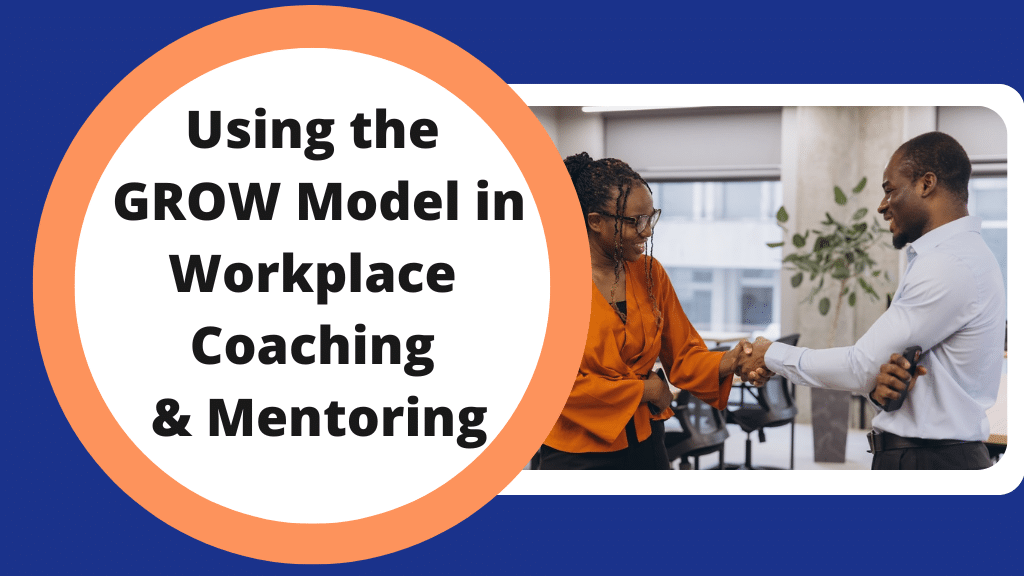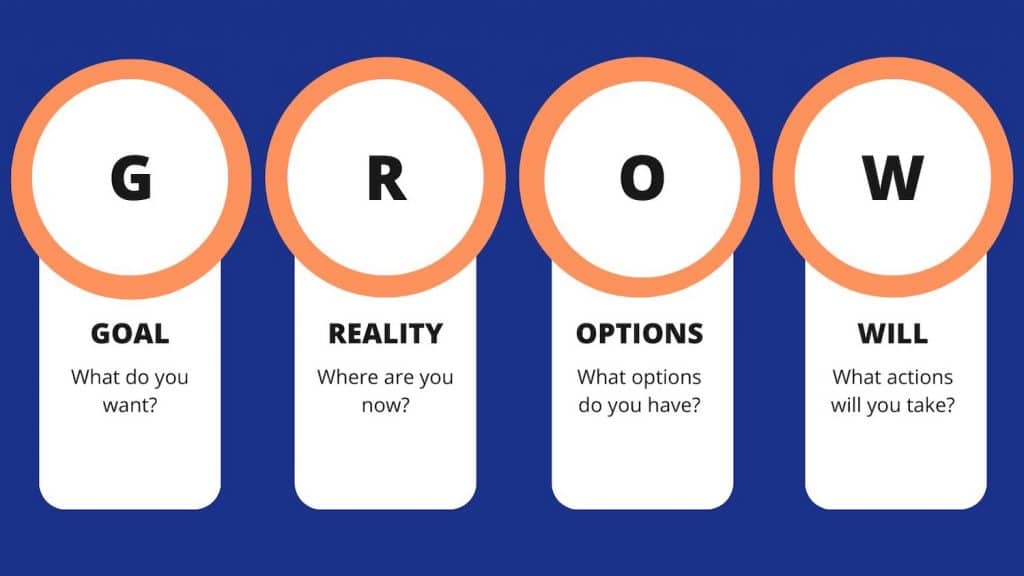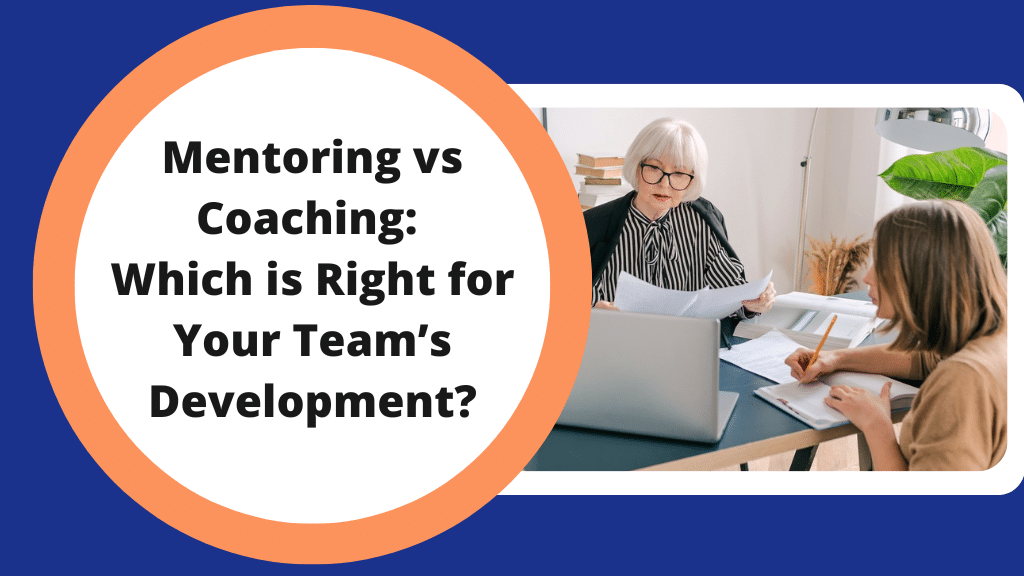April 22, 2025
Using the GROW Model in Workplace Coaching and Mentoring

Have you noticed how some workplace conversations seem to naturally inspire action while others lead nowhere? Or wondered how certain managers consistently develop high-performing team members while others struggle? The difference often lies in having a structured approach to professional development conversations.
Using the GROW Model in workplace coaching and mentoring is especially effective in turning informal chats into meaningful, results-focused development. Whether you’re supporting new team members, helping mid-career professionals tackle challenges, or nurturing future leaders, guided coaching conversations like these deliver measurable benefits across the organisation.
What is the GROW Coaching Model?

The GROW model is a straightforward four-step framework that was developed in the 1980s by coaching experts Sir John Whitmore, Graham Alexander and Alan Fine. It’s often used in workplace mentoring and coaching conversations today because it keeps things on track while empowering mentees to develop their own solutions. This approach builds problem-solving skills for the mentee that extend beyond the specific issue being discussed.
How the GROW Model Sequence Works in Mentoring
Each step of the GROW model helps the mentor and the mentee to stay focused on working towards a productive outcome. The structure prevents common pitfalls like jumping to solutions too quickly or ending without clear next steps.
Goal
The mentoring conversation begins by clearly defining what needs to be achieved. This first step makes sure everyone understands the purpose of the discussion and creates a clear target to work toward.
Reality
This second step explores the current situation, which helps the mentee to understand where they stand in relation to their goal.
Options
This phase looks at all the possible ways forward. The mentor helps the mentee to think creatively and come up with various ways to achieve the goal.
Will
The final step helps the mentee turn the discussion into an action plan with specific commitments.
Using the GROW Model in Workplace Coaching and Mentoring
The GROW model works well across various workplace situations:
| GROW Stage | Onboarding New Team Members | Performance Development | Career Progression Planning |
| Goal | What skills do you want to develop first? What would successful onboarding look like for you? | Which aspects of your performance would you like to enhance? What would improvement look like? | What role would you like to move toward? What aspects of growth matter most to you? |
| Reality | What relevant experience can you apply here? Which parts of your role feel most challenging? | When does this challenge typically occur? What contributes to the current situation? | Which of your current skills transfer to your target role? What gaps exist between your current and desired position? |
| Options | Who could help you learn specific tasks? What training opportunities are available? | What has helped you improve similar skills before? What additional support might help? | What projects could provide relevant experience? Which learning opportunities align with your needs? |
| Will | Which skills will you focus on this week? When shall we review your progress? | What will you do differently next week? How will you track your progress? | Which development activities will you prioritise? How will we track progress toward your goals? |
Benefits of Using GROW for Mentors and Mentees
The GROW model has specific, practical benefits in workplace coaching relationships. By using this structured approach, organisations can consistently achieve measurable improvements in professional development outcomes.
Advantages for the Mentee
- Mentees actively participate in creating solutions rather than passively receiving advice.
- The mentee’s ability and confidence to problem-solve will improve.
- The structured goal-setting process helps mentees know what they need to do to succeed.
- The mentee gets an accurate understanding of their strengths and development areas.
Perks for the Mentor
- The four-step sequence prevents mentoring or coaching discussions from becoming unfocused.
- Each phase suggests appropriate questioning techniques, so it is easier for new mentors.
- The mentor’s role shifts from advice-giver to discovery-guide, which means the mentor doesn’t need to have specialist knowledge of the problem.
- Clear goals and action plans allow mentors to measure and demonstrate development impact.
- The framework can easily be applied across different coaching and mentoring contexts and scenarios.
Benefits for the Organisation
- Regular structured coaching and mentoring conversations create an environment where continuous learning is normalised.
- Successful mentoring significantly improves staff engagement and reduces turnover.
- Coaching and mentoring conversations can help identify and nurture future leaders.
- By using a standardised methodology, the organisation can make sure that different teams and departments have similar development opportunities.
Becoming a Confident, Qualified Mentor
While the GROW framework is straightforward on paper, being able to apply it takes guidance and practice. We have a range of courses that can develop these skills, no matter where you are in your mentoring or coaching career:
Our Level 3 Award in Effective Mentoring covers the essentials of mentoring skills and techniques. This qualification suits professionals taking their first steps into formal mentoring roles.
For those wanting broader development, the Level 3 Certificate in Effective Mentoring builds on the Award with extra practice and theory. It also explores structured mentoring models and helps build confidence to handle a range of mentoring situations.
If you are specifically interested in coaching, you might be interested in our Level 3 Award in Effective Coaching or Level 3 Certificate in Effective Coaching. These focus on coaching approaches and techniques, including structured models like GROW.
For experienced professionals looking to advance their practice, the Level 5 Certificate in Effective Coaching and Mentoring gives a deeper focus on both disciplines. It includes advanced use of frameworks like GROW to support more complex workplace development needs.
Want to Lead Coaching Conversations with Impact? Learn the GROW Model of Coaching and Mentoring
Through Carlton Training’s range of ILM-accredited qualifications, you can develop the confidence and competence to apply the GROW framework in a practical way in your workplace. Our courses build your ability to support colleagues while simultaneously advancing your own professional development journey.
Take the next step in your coaching and mentoring practice by contacting us about our qualifications today.
Next ›‹ Previous
Back to Blog








